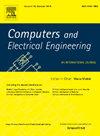Multi-focus image fusion algorithm based on adaptive connection and hybrid convolution attention
IF 4
3区 计算机科学
Q1 COMPUTER SCIENCE, HARDWARE & ARCHITECTURE
引用次数: 0
Abstract
In the field of multi-focus image fusion, in order to integrate the previous and subsequent information, most existing models simply overlay shallow and deep features directly at the encoding stage, but do not fully consider the importance of each feature layer, thus limiting the performance of image fusion. A multi-focus image fusion algorithm based on adaptive connection and hybrid convolution attention is proposed. The model uses a codec structure. Firstly, in the coding stage, the hybrid convolution attention module is used to enhance the feature extraction capability of the model. The design of adaptive connection helps the model to better capture the context information of the source image, and can adaptively calculate the weight of the feature map, and superimpose the feature map according to the weight. Secondly, deformable convolution module is used in decoding phase to enhance the modeling ability of complex edge details in the focused region and improve the feature reconstruction ability of the network. The experimental results on Lytro, MFI-WHU and HBU-CVMDSP datasets show that the proposed fusion algorithm achieves better fusion effect in both subjective and objective evaluation compared with other 10 fusion algorithms.
求助全文
约1分钟内获得全文
求助全文
来源期刊

Computers & Electrical Engineering
工程技术-工程:电子与电气
CiteScore
9.20
自引率
7.00%
发文量
661
审稿时长
47 days
期刊介绍:
The impact of computers has nowhere been more revolutionary than in electrical engineering. The design, analysis, and operation of electrical and electronic systems are now dominated by computers, a transformation that has been motivated by the natural ease of interface between computers and electrical systems, and the promise of spectacular improvements in speed and efficiency.
Published since 1973, Computers & Electrical Engineering provides rapid publication of topical research into the integration of computer technology and computational techniques with electrical and electronic systems. The journal publishes papers featuring novel implementations of computers and computational techniques in areas like signal and image processing, high-performance computing, parallel processing, and communications. Special attention will be paid to papers describing innovative architectures, algorithms, and software tools.
 求助内容:
求助内容: 应助结果提醒方式:
应助结果提醒方式:


